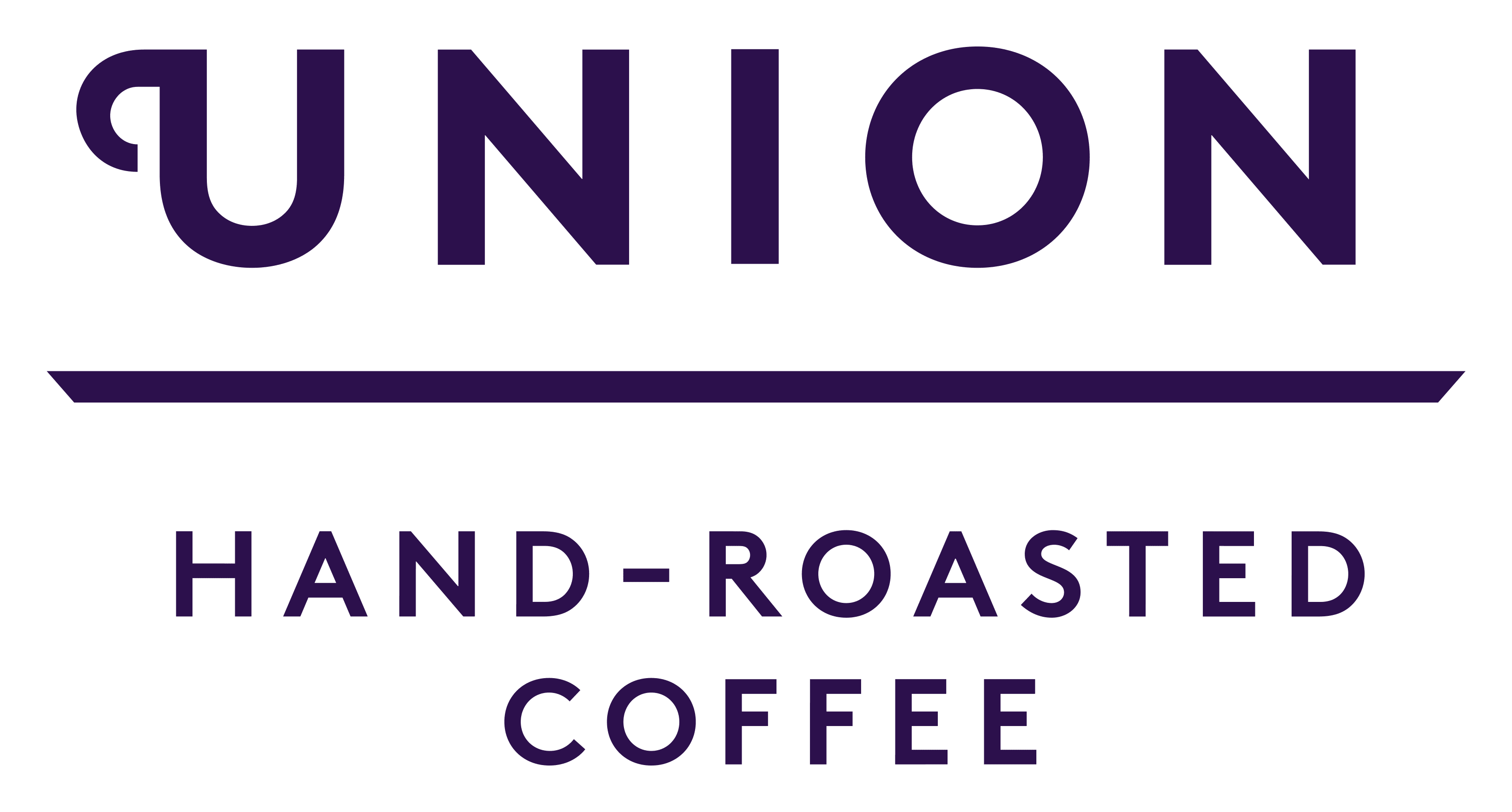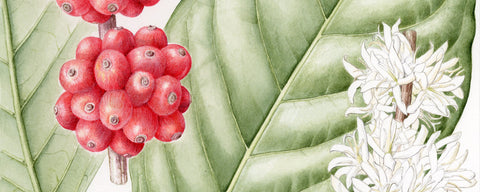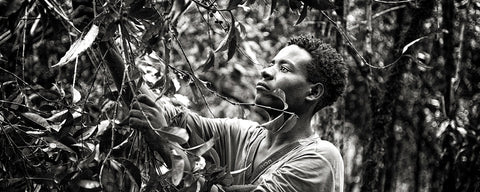First Published - November 15, 2010 (By Steven Co-Founder, Director of Coffee)
Not an excuse to watch the World Series, late October I attended the first congress for the Global Coffee Quality Research Initiative hosted at the Borlaug Institute, Texas A & M University.
Normal Borlaug (who died in 2009) is credited as the father of the Green Revolution from his research work on wheat genetics; developing disease resistant and high yielding varieties. He is acknowledged with saving over a billion people from starvation. The Borlaug hypothesis;” increasing the productivity of agriculture on the best farmland can help control deforestation by reducing the demand for new farmland”.
The GCQRI objective is to construct and fund an initiative to act as the industry’s research and development department, to improve, grow and protect the supply of specialty coffees into the market. The expected outcomes to be achieved at the end of the 2½ day congress were clearly mapped out ahead of the event and the congress was skilfully steered towards this point.
The initiative was borne from the passions of “Development” and “coffee” of Dr Tim Schilling. Using the formidable resource of the Borlaug Institute he has conducted a campaign to bring together key individuals who have the capability to address the problem which the specialty coffee industry is facing; a serious shortage of volumes of high quality coffees which are becoming inadequate to meet current and projected needs. The influence of global warming and potential threat of pandemics exacerbate the situation. There has been limited research into addressing these aspects of coffee supply problems
Therefore, the overarching direction of the meeting was creating a platform to set up a programme to direct basic and applied collaborative research that would be beneficial to the specialty coffee industry.
However, one of the main themes running through all discussions was the lack of a defining measure for quality. There is a demand for research demonstrating an ultimate objective measure of cup quality to give a clear correlation between biochemical data and sensory evaluation. This is appalling in our industry on which our foundation is based on quality.
From a personal view, a major thrust of developing research has to be at the molecular and genetic level. This is has to be a key hope in mapping the diverse array of phenotypes that could be beneficial in improving yields and cup quality. Relying on only two coffee species to support our daily caffeine habits is a risky strategy because domestic coffee is fragile and threatened by climate change. A remarkable fact that puts this in perspective is that that 96% of the known genetic diversity of coffee is found amongst the tiny uncultivated crops in Ethiopia, all of the coffee traded and consumed from the Americas, Africa and Indonesia account for just 4%. Using this Ethiopia as the resource to find and use new species may protect the future of our daily cup. One presentation (Dr V Petiard) outlined the need to determine the genetics within the next 20 years. But in reality immediate action is critical; wait 20 years and it will be gone.
The aim of this Initiative is to achieve coffee quality improvements that can be directed in part toward improving livelihoods in some of the world’s least food‐secure communities. But the irony is as economic development increases there is more pressure on land leading to a decrease in coffee supply. In addition to economic effects, weather patterns and climates will continue to be unreliable so demand for more stress tolerant germplasm is essential.
The strategy many national coffee research programmes have taken in directing farmers has not been in the interest of the specialty market and probably not in the best long term interest of farmers. An example quoted by Counter Cultures Peter Guiliano is the situation in Kenya. We have to remember that coffee is not a basic foodstuff, its specialty trading value is assessed on the basis of flavour – “we’re in the flavour business”. But if farmers are directed to plant high yield, disease resistant trees, then particular flavour nuance may disappear. Ruiru11 var in Kenya was cited several times as an example of this, although most of this is anecdotal evidence and research should be looking at the question of the elusive blackcurrant in Kenya coffee. It is essential that centres of research link cup quality to diverse factors influencing coffee production; yield, disease resistance, altitude & post-harvest processing.
So, Schillings Paradigm is that despite the huge actual value of the coffee market, why the lack of solid data available to produce specialty coffee? The answers are varied but probably because it’s still a young industry and too much variability exists at origin to begin to ask basic questions. Origin based research has focussed on yield and resistance but not cup quality. And most critically, research is restricted because current sensory methods are too variable. Biotechnology has to be correlated to sensory.
Consumers have demonstrated there is the potential to pay more for perceived quality differentiation. So to achieve these improvements consistently, every step of the supply chain has to be deconstructed. Starting with the genetics and how cup quality is genetically determined. Evaluate this phenotype through research for genetic improvement, how to propagate and distribute improved varietal, demand for extension services at farm level, export/trading, through to Quality Control, traceability and Intellectual Property.
Some of the concerns at the meeting was to ensure the expectations of everyone within the industry are heard, and that no one gets a raw deal; from the small producer onwards. There was concern that the strategy of research could influence producers to accept lower pricing, or could lead to increased input costs reducing profit margin for producers. However, the objective for the initiative is to be equitable for all participants.
I’ve mentioned genetics several times and there was some naivety, perhaps anxiety, expressed towards the geneticists. From my discussion with participants of the International Coffee Genome Network (ICGN), this was one of the most positive advancements (coffeegenome.org). ICGN represents scientists from universities, research institutes and industry from Africa, America, Europe and Asia. This collaboration has a goal to advance agricultural research for sustainable coffee production by developing knowledge of the coffee genome at the molecular, biochemical, and physiological levels.
As already mentioned, despite its economic importance coffee has received limited attention with respect to molecular genetics and genomic research so the brief of ICGN is to develop a strategy to sequence the coffee genome.
The premise is that sequencing the genome will help decipher the genetic and molecular bases of important biological traits in coffee that are relevant to farmers, roasters, and consumers. This knowledge is fundamental to allow efficient use and particularly the preservation of coffee genetic resources for the development of improved cultivars in terms of enhanced quality, yield, and resistance with reduced economic and environmental costs.
Although considerable diversity exists in diploid Coffea species, its use in conventional coffee breeding programmes has been very limited. Coffea arabica is characterized by a very low genetic diversity, reproductive biology, and evolution. It is the narrow genetic base of cultivated C. arabica that has created the bottleneck for coffee breeding and limits the opportunity to develop cultivar improvement. The strategy to sequence the coffee genome is to examine first the two species that are ancestors of the most cultivated species Coffea arabica. The father species, Coffea canephora (robusta), and the mother; the non-cultivated species Coffea eugenioides.
In the future, the ability to capture and manipulate this genetic diversity and effectively utilize germplasm in traditional coffee breeding programmes will be vital for sustainable coffee production.
But these advances in understanding the coffee genome and its biology must be achieved sooner rather than later in order to get the benefit of increased quality, yield and protection from losses by pests, diseases and stress related to climatic changes. Unravelling the coffee genome will contribute significantly to future coffee improvement.
A final comment is the proposed funding of the GCQRI is through a “check-off” mechanism, where green coffee buyers / roasters pay USD$0.005/lb as a fundraising tax. There are still questions about managing this mechanism. Union Hand Roasted Coffee contributed towards the genesis seed-funding of GCQRI and we certainly support the overarching aim of the project and intend to continue our participation.
It is important to state here that although there is indeed a shortage, specialty coffee of the very highest quality is available to those buyers who are prepared to pay for it. The current turbulent market is a separate although related issue and could make the basis for more comment.
Original presentations and transcripts from the initiative can be reviewed on www.gcqri.org


